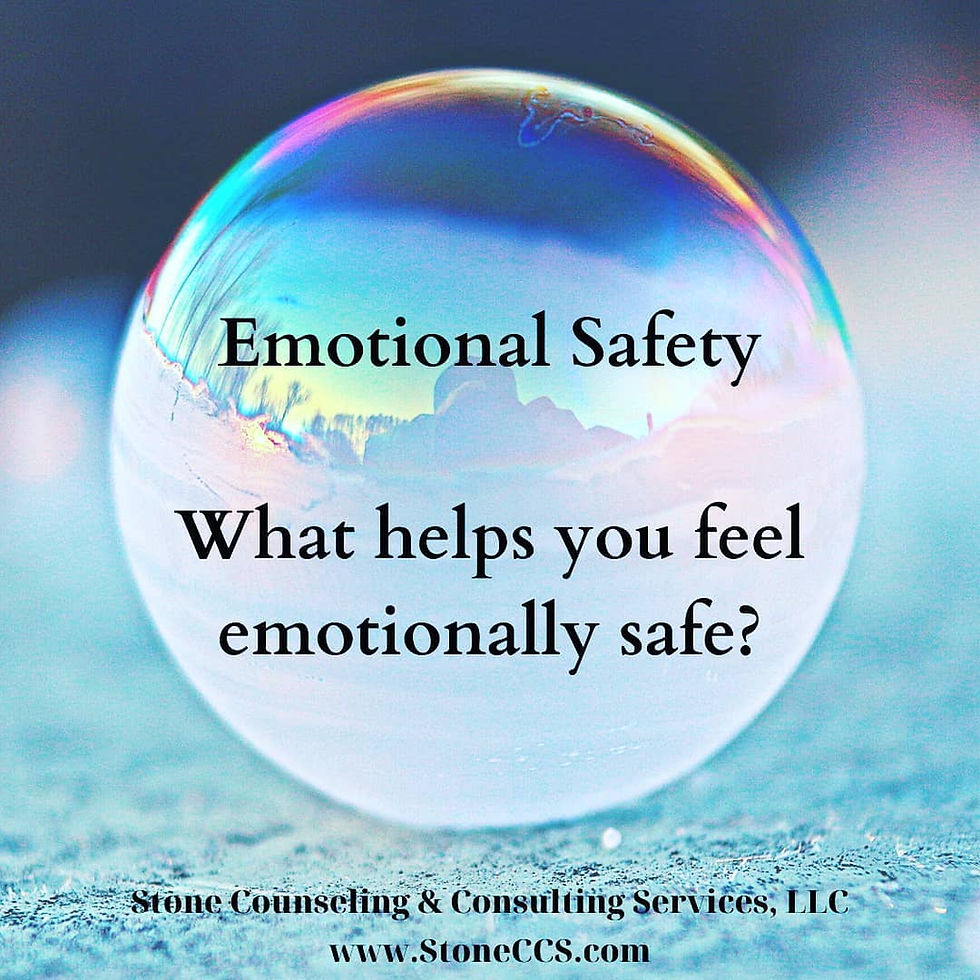Emotional Safety
- Rebecca Stone, LMHC

- Apr 27, 2021
- 1 min read

When things are going well, there are typically satisfactory elements in place which help us feel emotionally safe. What types of things help you feel emotionally safe? Here are some examples (in no particular order):
Safe environment/home/workplace
Stability
Structure
Routine
Predictability/a sense of knowing
Trust for self and others
Genuineness/authenticity of self or others
Values-based living/choices/actions
Non-judgmental support system
Respect for self and others/from others
Healthy, reciprocal relationships
Belief in self, such as your ability to figure things out/make decisions/learn from mistakes
Self-esteem and/or self-confidence
Belongingness
Healthy boundaries
Communicating rather than engaging in conflict/effectively managing conflict
Being heard and understood
Self-awareness and reflection
Faith/prayer
Loving and feeling loved
When one or more emotional safety needs are not being reasonably met, are not being actively managed with coping skills, healthy self-talk, etc., or are not in the process of change, things can become problematic. The more significant the breach of emotional safety, the more difficult it can be to regain a sense of emotional safety.
We are responsible for helping to support our own emotional safety; we cannot solely rely on external factors to help us feel safe. Reflecting on what we need to feel emotionally safe and taking steps to support our sense of emotional safety can be key in reducing the imbalances or overwhelm. In many cases, improvements can be made by challenging unhelpful thoughts and making baby-steps toward necessary changes.
Food for thought. Keep reflecting on this: What do you need to feel emotionally safe?


